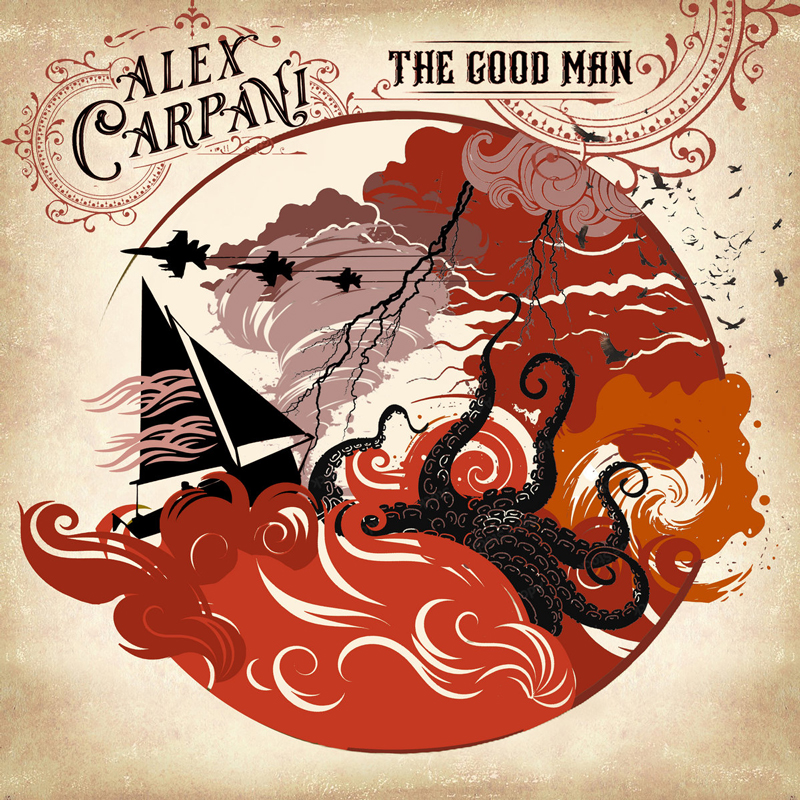Alex Carpani – The Good Man (Independent Artist Records, 2024)
On The Good Man, Italian composer and keyboardist Alex Carpani invites listeners on a two-part voyage through the shifting tides of human emotion and psychological introspection. Released independently in 2024, the album includes a pair of thirty-minute suites, Amnesiac and Good & Evil, that chart a course between chaos and clarity, suffering and serenity.
Carpani, based in Bologna, has assembled a veteran crew for the journey: Bruno Farinelli (drums), Giambattista Giorgi (bass), and Emiliano Fantuzzi (guitar) form the instrumental foundation, while guest appearances by soprano saxophonist Alessio Alberghini and specially the fantastic mezzo-soprano Valentina Vanini deepen the drama. Vanini, in particular, delivers a commanding performance, elevating several movements with a captivating, emotive and flawless voice that bridges the operatic and the otherworldly.
The first suite, Amnesiac, features nine tracks that probe themes of memory, identity, and mental dislocation. It opens with a cinematic sweep, literalized by the rhythmic pulse of a train, before plunging into the controlled turbulence of “Perfect Chaos.” Carpani’s synthesizers rise alongside Fantuzzi’s angular guitars, building tension that eventually softens into the ambient haze of “Flashbacks.” Notably, Vanini shines the brightest on “Past Life,” where her soaring vocals cut through layers of instrumental swirl. The suite’s arc ends with “End of the Day,” a gentle segment where exquisite Mellotron sounds and sustained guitar lines bring a sense of closure.
Good & Evil shifts the tone, emphasizing melody while continuing the album’s conceptual dichotomies. It opens with atmospheric sound design reminiscent of The Wall-era Pink Floyd, then lurches into the combative interplay of “The Flow” and “PTSD.” Carpani’s restrained vocals may not dazzle technically, but they serve the emotional pacing well, ceding the spotlight to Vanini’s rich vocal range and to moments of instrumental splendor.
The fabulous “Mystical” combines cathedral organ (some of the best keyboard work on the album), symphonic layering, and operatic color in a spine-tingling ascent. This tension gives way to “Stillness and Ecstasy,” a brief breath before the album’s closing statement. “Everything Falls Into Place” offers a sense of fragile transcendence, underscored by children’s laughter.
While Carpani’s keyboards are never far from the foreground, they rarely dominate. That restraint feels intentional, allowing the arrangements to breathe and leaving room for emotional nuance. Still, fans of his earlier work may wish for more prominent synth, organ, Mellotron and piano features; when they do emerge, particularly in the second suite, they shine. His compositional instincts lean heavily on atmosphere and counterpoint rather than soloistic flash, and the result is more symphonic than showy.
The album bridges neoprog progressive rock, hard rock, ambient electronica, and symphonic music, but it does so with cohesion and clarity. The production by Daniele Bagnoli is clean and modern, while Gigi Cavalli Cocchi’s artwork adds a visual metaphor for the album’s central sentiment: a fragile vessel adrift in overwhelming waters.
Carpani himself describes The Good Man as a career-spanning synthesis, and that feels apt. The record distills his wide-ranging influences into a focused statement. With Vanini’s impressive, haunting vocals and Carpani’s steady hand on the helm, this is a journey worth taking.
Buy The Good Man.

